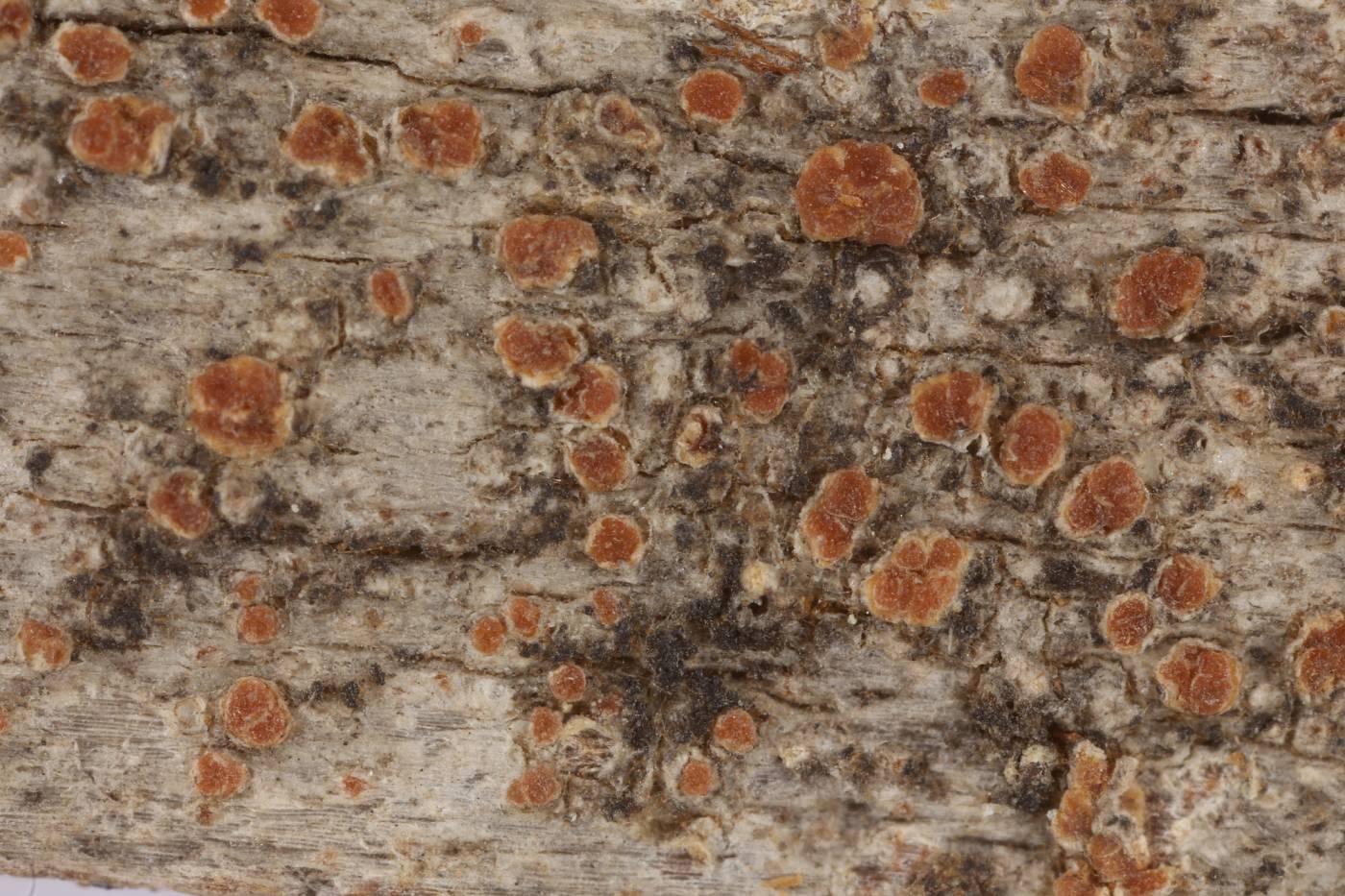A crustose lichen, widely distributed throughout the northern boreal zone of coniferous forests. In Europe, the species also occurs at lower latitudes, in high mountain ranges usually with a well-developed upper tree line. It has been reported from a wide range of mainly organic substrates (including peat, plant debris, mosses and other lichens). In the Czech Republic the lichen occurs in a form of extensive light-coloured thalli mainly on lodged, often dead branches of Pinus mugo, and eventually also at tree bases. However, in areas with long-lasting snow cover it can be found on permanently damp wood as well. The species in the fertile stage resembles some members of the genus Pertusaria sensu lato. However, A. carneonivea differs from all of them in the 2–3-septate ascospores and from most of them also in the presence of gyrophoric acid (C+ red reaction). Typical species' habitats are mountain raised bog with stands of Pinus mugo or open spruce-dominated mountain peatland forests. In the Czech Republic, the lichen is known historically from the Jizerské hory Mountains (the lowest locality in the Czech Republic at less than 1000 m); recent records come from the higher elevations in the Krkonoše, Šumava, Hrubý Jeseník and Jizerské hory Mountains.
Literature: Palice Z. (1999): New and noteworthy records of lichens in the Czech Republic. – Preslia 71: 289–336.
taxonomic classification:Ascomycota → Lecanoromycetes → Ostropales → incertae sedis Ostropales → Anzina
Red List (Liška & Palice 2010):VU – vulnerable
Red List (Malíček 2023):C2 – strongly endangered
Occurrence in the Czech Republic
All records: 15, confirmed 14. One click on a selected square displays particular record(s), including their source(s).
